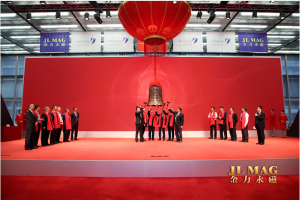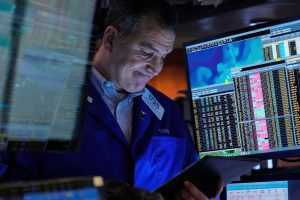Brendan Smialowski / AFP via Getty Images
-
Federal Reserve officials are bracing for President Donald Trump’s tariffs to impede both of the central bank’s goals of keeping inflation in check and employment high.
-
Fed officials said tariffs could raise consumer prices, stoking inflation, slowing the economy, and costing jobs.
-
Rising inflation and unemployment would force the Fed to choose between fighting inflation and saving the labor market. Its monetary policy can only help one of those problems at a time, and could potentially make the other worse.
The U.S. economy is in for higher inflation and slower growth as President Donald Trump’s trade war heats up, officials at the Federal Reserve said this week.
Central bankers are in the same boat as other experts: waiting to see how the trade wars unfold. Several Fed officials said they expect consumer prices to rise and economic growth to slow, worsening the outlook for both sides of the Fed’s “dual mandate” to keep inflation low and employment high.
Susan Collins, president of the Federal Reserve Bank of Boston, spoke with Yahoo! Finance Friday. She said she expects inflation of “well over 3%” this year. That would be a setback, considering the Fed’s goal is to get inflation to a 2% annual rate, as measured by core Personal Consumption Expenditures. Core PCE increased 2.8% over the year in February.
In a separate interview with the Financial Times, Collins said the central bank “would absolutely be prepared” to stabilize financial markets if they became disorderly. Stocks and bond prices have swung wildly in recent days in response to Trump’s steep tariffs and his subsequent announcement on Wednesday that he would pause most of them for 90 days.
Alberto Musalem, president of the St. Louis Fed, said the central bank could use its monetary policy to “lean against” tariff-driven price increases. Speaking at a bankers’ convention in Arkansas on Friday, Musalem said he was skeptical of the “textbook” view that the Fed should ignore tariff-driven price increases because they are, in theory, one-time events.
Musalem acknowledged high inflation and a slower economy would put the Fed in a “challenging” position.
The Federal Reserve’s main tool to fight inflation and keep the labor market afloat is changing the federal funds rate, which influences borrowing costs on all kinds of loans. The Fed can lower the rate to boost the economy with easy money, preventing unemployment. Or, it can raise the rate to reduce borrowing and inflation by allowing supply and demand to rebalance.

